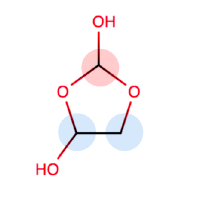Release History
Releases follow the major.minor.micro scheme recommended by PEP440, where
major increments denote a change that may break API compatibility with previous major releases
minor increments add features but do not break API compatibility
micro increments represent bugfix releases or improvements in documentation
0.3.0 - API Improvements
Several improvements and changes to public API.
New features
PR #292: Implement Topology.to_openmm and remove ToolkitRegistry.toolkit_is_available
PR #322: Install directories for the lookup of OFFXML files through the entry point group openforcefield.smirnoff_forcefield_directory. The ForceField class doesn’t search in the data/forcefield/ folder anymore (now renamed data/test_forcefields/), but only in data/.
API-breaking Changes
PR #278: Standardize variable/method names
PR #291: Remove ForceField.load/to_smirnoff_data, add ForceField.to_file/string and ParameterHandler.add_parameters. Change behavior of ForceField.register_X_handler functions.
Bugfixes
PR #327: Fix units in tip3p.offxml (note that this file is still not loadable by current toolkit)
PR #325: Fix solvent box for provided test system to resolve periodic clashes.
PR #325: Add informative message containing Hill formula when a molecule can’t be matched in Topology.from_openmm.
PR #325: Provide warning or error message as appropriate when a molecule is missing stereochemistry.
PR #316: Fix formatting issues in GBSA section of SMIRNOFF spec
PR #308: Cache molecule SMILES to improve system creation speed
PR #306: Allow single-atom molecules with all zero coordinates to be converted to OE/RDK mols
PR #313: Fix issue where constraints are applied twice to constrained bonds
0.2.2 - Bugfix release
This release modifies an example to show how to parameterize a solvated system, cleans up backend code, and makes several improvements to the README.
Bugfixes
PR #279: Cleanup of unused code/warnings in main package __init__
PR #259: Update T4 Lysozyme + toluene example to show how to set up solvated systems
PR #256 and PR #274: Add functionality to ensure that links in READMEs resolve successfully
0.2.1 - Bugfix release
This release features various documentation fixes, minor bugfixes, and code cleanup.
Bugfixes
PR #267: Add neglected <ToolkitAM1BCC> documentation to the SMIRNOFF 0.2 spec
PR #258: General cleanup and removal of unused/inaccessible code.
PR #244: Improvements and typo fixes for BRD4:inhibitor benchmark
0.2.0 - Initial RDKit support
This version of the toolkit introduces many new features on the way to a 1.0.0 release.
New features
Major overhaul, resulting in the creation of the SMIRNOFF 0.2 specification and its XML representation
Updated API and infrastructure for reference SMIRNOFF ForceField implementation
Implementation of modular ParameterHandler classes which process the topology to add all necessary forces to the system.
Implementation of modular ParameterIOHandler classes for reading/writing different serialized SMIRNOFF forcefield representations
Introduction of Molecule and Topology classes for representing molecules and biomolecular systems
New ToolkitWrapper interface to RDKit, OpenEye, and AmberTools toolkits, managed by ToolkitRegistry
API improvements to more closely follow PEP8 guidelines
Improved documentation and examples
0.1.0
This is an early preview release of the toolkit that matches the functionality described in the preprint describing the SMIRNOFF v0.1 force field format: [DOI].
New features
This release features additional documentation, code comments, and support for automated testing.
Bugfixes
Treatment of improper torsions
A significant (though currently unused) problem in handling of improper torsions was corrected.
Previously, non-planar impropers did not behave correctly, as six-fold impropers have two potential chiralities.
To remedy this, SMIRNOFF impropers are now implemented as three-fold impropers with consistent chirality.
However, current force fields in the SMIRNOFF format had no non-planar impropers, so this change is mainly aimed at future work.
 Open Force Field Toolkit
0.4.0
Open Force Field Toolkit
0.4.0